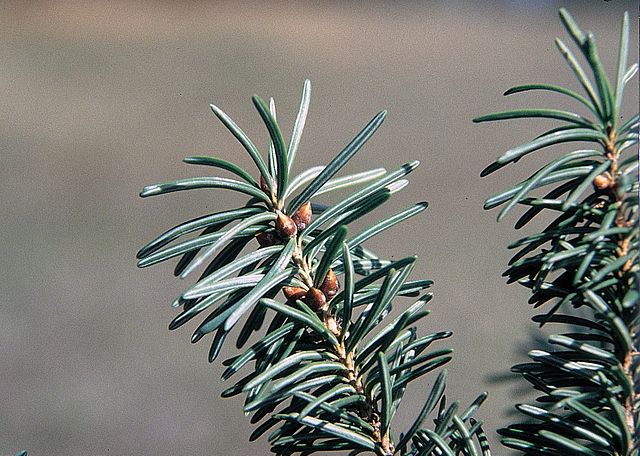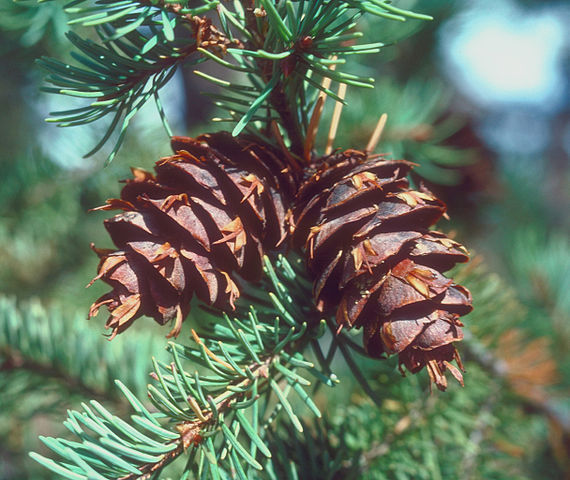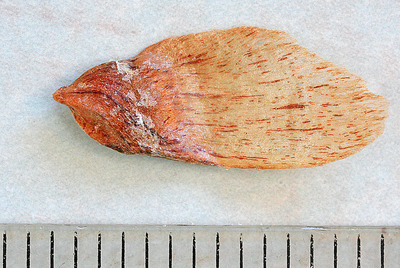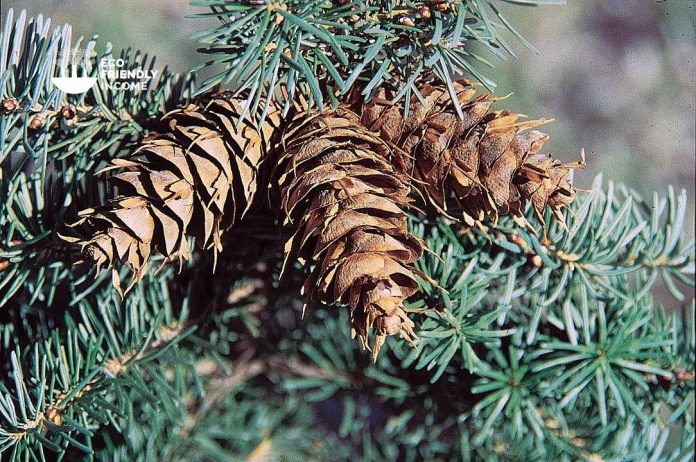A field guide on how to identify and propagate Rocky Mountain Douglas Fir (Pseudotsuga menziesii var. glauca), a hardy tree that is native to western North America.
How to Identify Rocky Mountain Douglas Fir (Pseudotsuga menziesii var. glauca)
Leaves

Rocky Mountain Douglas Fir leaves or needles are linear-shaped, grow in a spiral, alternate arrangement, and have entire margins (smooth).
The needles are flat, if you were to pinch them between your fingers and try to roll, they wouldn’t (It’s a way to distinguish them from spruce which would roll).
The needles also have a tinge of blue color, which distinguishes them from other fir trees.
Cones

Rocky Mountain Douglas fir cones are medium-sized cones, typically measuring 1-2.5 inches in length, with a rounded shape and an asymmetrical base.
These cones have light brown scales that are typically smooth and slightly curved. The scales are arranged in a spiral pattern around the cone, overlapping each other.
The seeds are dark brown and typically measure 0.25-0.5 inches in length.
Flowering Season
Rocky Mountain Douglas fir cones typically open in the spring and shed their seeds in the late summer or early fall.
Habitat
Rocky Mountain Douglas Fir (Pseudotsuga menziesii var. glauca) habitat is found in the Rocky Mountain & Pacific Coastal Forests.
These coniferous evergreen trees typically grow in moist, well-drained soils on mountainsides and ridges. They are tolerant of a wide range of temperatures, from hot and dry to cold and snowy, and can generally be found in coniferous forests at elevations between 2,000 and 3,000 meters.
They are an important species in the Rocky Mountain region, providing habitat for wildlife and essential ecological services such as erosion control and carbon sequestration.
Wildlife Value
Wildlife that benefits from Rocky Mountain Douglas Firs include black bears, gray wolves, elk, red squirrels, pygmy rabbits, mountain goats, and a variety of birds, such as bald eagles, owls, and woodpeckers.
These species rely on the trees for food, shelter, and protection from predators.
How to Propagate Rocky Mountain Douglas Fir (Pseudotsuga menziesii var. glauca)

Hardiness Zone: 3-6

Soil Type: Clay, loam, rock, sand.

Water: Normal.

Exposure: Full Sun to Partial Shade.
You can propagate Rocky Mountain Douglas Fir with 2 methods.
- By Seed: It’s slower to get an established tree but the success rate is higher.
- By Cuttings: You can get established trees faster but rooting conifers is an art compared to deciduous trees.
Sowing seeds is by far the easiest method, and that’s what we’ll cover. If you’re interested in cuttings, take a look at our guide on how to propagate plants with cuttings for more info.
How to Propagate Rocky Mountain Douglas Fir by Seed
Of course, to propagate by seed you will need the seeds themselves. You don’t have to order them online if you have trees nearby though.
Personally, I prefer to harvest seeds myself, that way I know how fresh they are.
But if you don’t have Rocky Mountain Douglas Fir nearby, you can always order the seeds on Arbo Quebecium.
How to Harvest Seeds

There are two good times to harvest seeds from cones. During the end of summer, or mid-winter.
If you harvest seeds during summer, you will need to give them a cold stratification treatment. Seeds harvested from cones mid to late winter won’t need treatment, since nature did the cold treatment itself.
To harvest seeds, all you need to do is simply collect the cones and place them inside a brown paper bag in a dry area.
The dryness will make the cones open up, and allow you to collect the winged seeds.
Cold Stratification
In general, douglas fir cold stratification is shorter than most northern trees.
Here’s how to do it:
- Place in a tagged bag with moistened sand into your freezer for 30 days
- Take out of freezer and place into room temperature water for 12 hours.
- Place back into a bag and then into your refrigerator for another 15-30 days.
After this, the seed will be ready to plant.
You can also skip this by simply planting them outside in the fall for them to sprout next spring. Or also by harvesting cones mid-winter.
For germination indoors, sow the seeds into a peat moss medium, moisten and cover them with a wrap.
Seeds will germinate within a week.
FAQ
Q: Can you propagate Rocky Mountain Douglas Fir with stem cuttings?
A: Yes it’s possible but the success rate is fairly low (roughly 15%). It works much better when cuttings are taken from young, vigorous trees.
Q: Where does Douglas Fir grow best?
A: Fir trees prefer deep, well-drained soils and cannot grow well in areas with poorly drained or compacted soils. On the coast, these trees are usually found in areas where marine sandstones and shales have broken down and created fine-textured, well-drained soils.
Q: How tall is a 100-year-old Douglas Fir?
A: In general, Douglas fir trees can grow to heights of up to 150 feet (45.7 meters).
Q: How tall is the tallest Rocky Mountain Douglas Fir?
A: The tallest Rocky Mountain Douglas Fir recorded is 220 feet (67 m) tall.
Q: How long does it take for a Rocky Mountain Douglas Fir to grow to 8 feet?
A: It takes 7-10 years for Douglas firs to grow to the right size when they are grown as Christmas trees, and they are trimmed every summer to ensure they are all the same size and shape.

